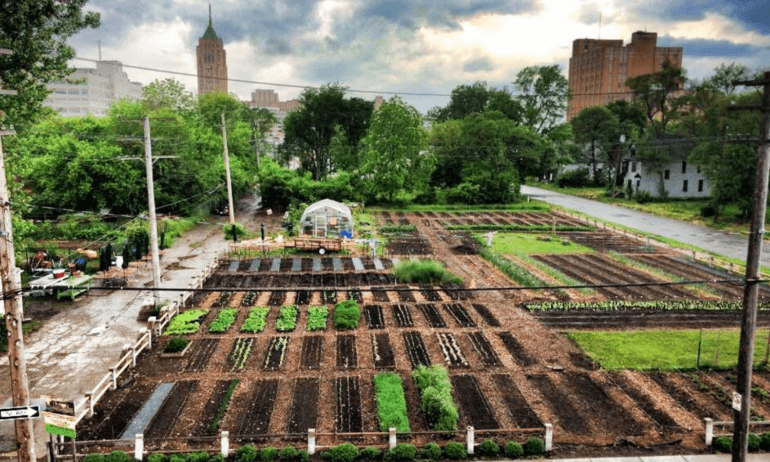City Blooming for Dummies
Table of ContentsSome Known Details About City Blooming City Blooming - TruthsCity Blooming Fundamentals ExplainedThe Best Guide To City BloomingLittle Known Questions About City Blooming.
Intrigued in growing food for sale in the City of Chicago? Below is a list of often asked questions pertaining to the rules and guidelines that cultivators need to consider when preparing a city farming task.
The zoning modification does not change any type of other codes handling composting, structure licenses, buying or renting City had property, service licenses or ecological contamination. There are existing codes that regulate these problems and they continue to be completely impact and might be relevant to your project. Neighborhood yards are commonly owned or handled by public entities, civic organizations or community-based companies and maintained by volunteers.
Urban farms grow food that is meant to be sold, either on a not-for-profit or for-profit basis. Due to their industrial objective, city farms need a business license. Yes. A community garden is permitted to offer excess create that was expanded on site if the sales are accessory or subordinate to the garden's key function explained over.
What Does City Blooming Mean?
Composting is enabled yet only for plant material that is produced and utilized on website. The amount of compost material can not exceed 25 cubic backyards at any kind of given time according to the standards in 7-28-715 of the City's Municipal Code. Yes. Due to the fact that the soil at the majority of new garden sites needs changing, compost, soil, wood chips, or other products can be obtained to construct or boost the expanding area - City gardening.

If a building authorization is needed then the hoophouse will be taken into consideration an accessory structure. You can locate out more concerning the structure authorization requirements by calling the Department of Buildings. The 25,000-square-foot dimension restriction is intended to avoid a single community garden from dominating an offered block or diminishing the block's existing residential or business character.
The limit does not apply to yards located in Public Open Area (POS) districts. Can there be more than one neighborhood yard that is 25,000 square feet on a single block? Secure fencing is not required, nonetheless, gardens that have big auto parking areas might be called for to set up fence or various other landscape design functions.
Some Of City Blooming
B1 & B2 areas call for that all commercial usage activities be performed inside. Is secure fencing needed for urban farms? Fences may be needed, along with landscape design and testing, for specific car parking locations and outdoor job or storage space areas depending on place and the particular activity taking location.
Yes. Urban farms need structure permits and zoning authorizations before construction. Other types of city evaluation may be called for depending on specific structures, tasks, dimension, landscaping, licensing, public health and stormwater administration issues. Most of these requirements are identified in the project layout or allowing procedure, however, the applicant may be liable to individually recognize details licenses or allows that may be called for.
The Division of Organization Matters and Consumer Defense can aid establish the specific kind of organization permit that's called for. Off road car parking is needed for many commercial tasks in Chicago. The needed number of parking rooms is based on the number of staff members working on site and not the square video footage of the expanding area.
9 Easy Facts About City Blooming Described

Yes. An urban farm can offer garden compost material produced on website, however, the procedure has to follow the regulations in 7-28-715 of the Chicago Municipal Code. Yes. Aquaponic systems are allowed indoors on city ranches in many zoning districts. However, a zoning evaluation and building permit is needed in order to install frameworks or systems and a business license is required as explained over.
Up to 5 hives or swarms of honey might be maintained as an accessory usage. Nonetheless, beekeepers have to sign up with the Illinois Division of Farming. For more details concerning the suggested zoning amendment you might contact the Department of Housing and Economic Growth, Bureau of Preparation and Zoning at 312.744.8563.
Farming in cities and city areas An urban ranch in Chicago. Urban agriculture describes various techniques of cultivating. https://allmyfaves.com/cityblooming?tab=City%20Blooming, handling, and dispersing food in city areas. The term additionally applies to the location tasks of pet husbandry, tank farming, beekeeping, and cultivation in a city context. Urban farming is distinguished from peri-urban agriculture, which see happens in backwoods beside residential areas.
Some Known Incorrect Statements About City Blooming
, who look for to form social networks founded on a common ethos of nature and neighborhood holism. These networks can create by method of official institutional assistance, ending up being incorporated into regional community preparation as a "transition town" activity for sustainable city development.
In either situation, the extra direct access to fresh veggie, fruit, and meat items that may be become aware with city agriculture can enhance food safety and security and food safety and security while reducing food miles, leading to lower greenhouse gas exhausts, therefore adding to environment adjustment reduction. Several of the initial proof of metropolitan agriculture originates from Mesopotamia.